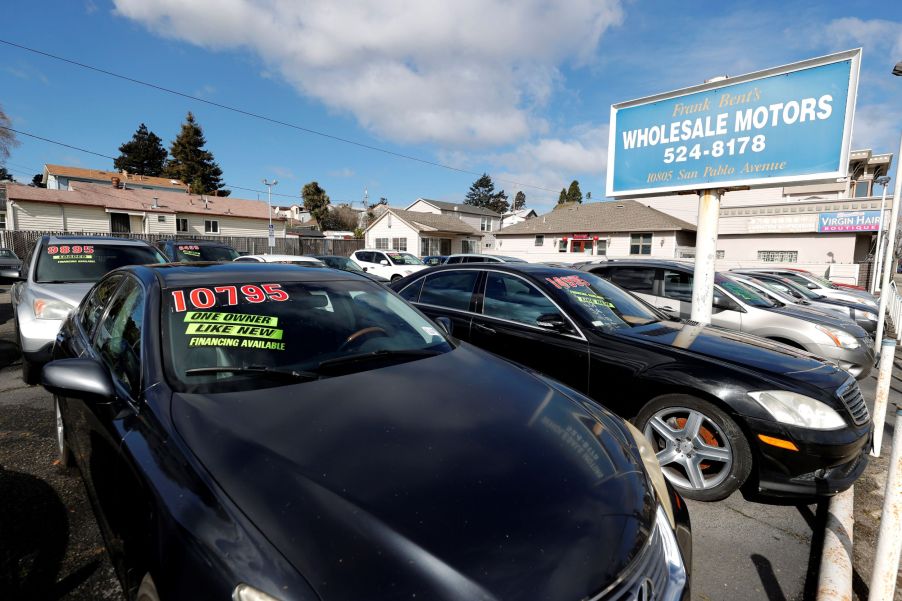
A MotorBiscuit Chat: Cars.com’s Joe Wiesenfelder on EVs, ADAS, and Used Car Prices
Shopping for cars today isn’t just a matter of dealing with historically high used car prices. Between debating over electric vehicles and navigating through advanced driver-assistance system terminology, car buying is more complicated than ever. But it’s something Cars.com’s Executive Editor, Joe Wiesenfelder, has decades of experience in. And at the 2021 Chicago Auto Show, I managed to pick his brain on the situation surrounding these high used car prices, ADAS, and the state of EVs.
“Supply and demand…on both sides” is driving used car prices up, Joe Wiesenfelder says

Although they’re starting to come down, used car prices are still higher than they’ve been in years. In some cases, used models are trading at higher prices than their brand-new counterparts. But what’s been the driving force behind this trend?
“It’s the same old story, it’s supply and demand,” Joe Wiesenfelder told me. “But there are many different things affecting both sides of that.” On the production side, for example, there’s the continuing microchip shortage caused both by COVID-related production shutdowns and increased electronics consumption. And with fewer new cars available, car shoppers increasingly turn to used models. The current spikes in used car prices are because the supply can’t meet the demand.
However, chips aren’t the only things in short supply: seat foam and tire rubber are running low, too. And it’s not purely because of the COVID-19 pandemic, Joe Wiesenfelder explains. The recent Texas winter storms caused petrochemical plants to close—and you need petrochemicals to make plastics. Wiesenfelder also informed me about a fire at a Renesas Electronics microchip factory in Japan; the company accounts for 30% of global automotive microchip manufacturing. After the March fire, the company said it would take 100 days to get the factory back up to full capacity, Reuters reports. And the Suez Canal blockage certainly didn’t help.
“I’m tired of the ‘perfect storm’ analogy, but in a way, it all kind of came together.”
joe wiesenfelder
Plus, the demand for new vehicles isn’t because people can’t stop shopping. At first, regulations didn’t classify dealerships to be essential businesses. Things changed, though, “once it was recognized that…at minimum, people needed to keep their vehicles moving,” Joe Wiesenfelder says. And vehicles go off-lease even if the leaders aren’t driving them. Therefore, they needed new cars—that weren’t available—to lease in their place.
Joe Wiesenfelder appreciates some ADAS features, but not all of them
Rising used car prices are also tangentially related to rising new car prices, Joe Wiesenfelder mused. With many lightly-used cars offering similar features to their new counterparts, buying the former isn’t necessarily an issue. Especially since cars increasingly offer multiple ADAS features as standard.
Joe Wiesenfelder has more or less witnessed both ADAS’ and partially-autonomous vehicles’ rise firsthand. Before he was Executive Editor at Cars.com, he wrote for Wired and got a taste of a very early autonomous vehicle prototype. But when it comes to these features’ latest versions, his impression is rather mixed. “I love features that make you arrive less fatigued—that assist. I’m more skeptical of the ones that take over,” he says.
His main problem with software like GM’s SuperCruise or BMW’s Traffic Jam Assist isn’t that they’re unsafe per se. It’s more that they force the driver to pay attention even when they’re steering the car. And what’s the point of paying money for these systems if they don’t safely allow you to, for instance, look at your phone, he muses.
However, Joe Wiesenfelder also noted that the culture surrounding partially-autonomous vehicles has changed since he started covering them. In the early days, “no one ever trusted the idea of letting the computer drive the car,” he explains. Now, because these driver-assistance systems are fairly robust, people are much more comfortable with the idea. But “the limits are still a concern,” he points out. Overly-conservative ADAS features get turned off, so they’re functionally useless from a safety perspective. And if consumers don’t understand these systems’ limits properly, the consequences can be deadly.
For maximum EV ownership satisfaction, quality home charging is essential
“I have very strong feelings about infrastructure regarding EVs,” Joe Wiesenfelder tells me. To him, while home chargers aren’t “the only infrastructure that matters,” they’re perhaps the most important.
“Home charging is the only realistic and satisfying way to own an EV,” he explains. Unless you’re going on a long trip, you just plug it in at night and carry on. And even then, most US households have a second car that serves as the gasoline-powered road trip machine.
Regarding public charging stations, Joe Wiesenfelder feels that they provide a safety net for “the uninitiated.” He acknowledges that they can be useful if someone is running low on their remaining range. And some automakers, such as Tesla, are trying to curb range anxiety with larger packs and more range. But even so, the most convenient public charging option—DC fast charging—is still less convenient than charging at home. And more to the point, fast-charging too often damages the EV’s battery.
Still, one of the biggest hurdles, besides overall cost, is that preparing a home for EV ownership and charging is “complicated,” Joe Wiesenfelder says. Installing a home charger requires wiring and service upgrades, permits, contractors, and so on. It’s getting easier, but it’s still an expensive and time-consuming process that internal-combustion cars don’t have to deal with. As such, educating potential EV owners about this process, as well as supporting them through it, is absolutely necessary.
Luckily, educating consumers is something Joe Wiesenfelder and his team excel at.
Follow more updates from MotorBiscuit on our Facebook page.


